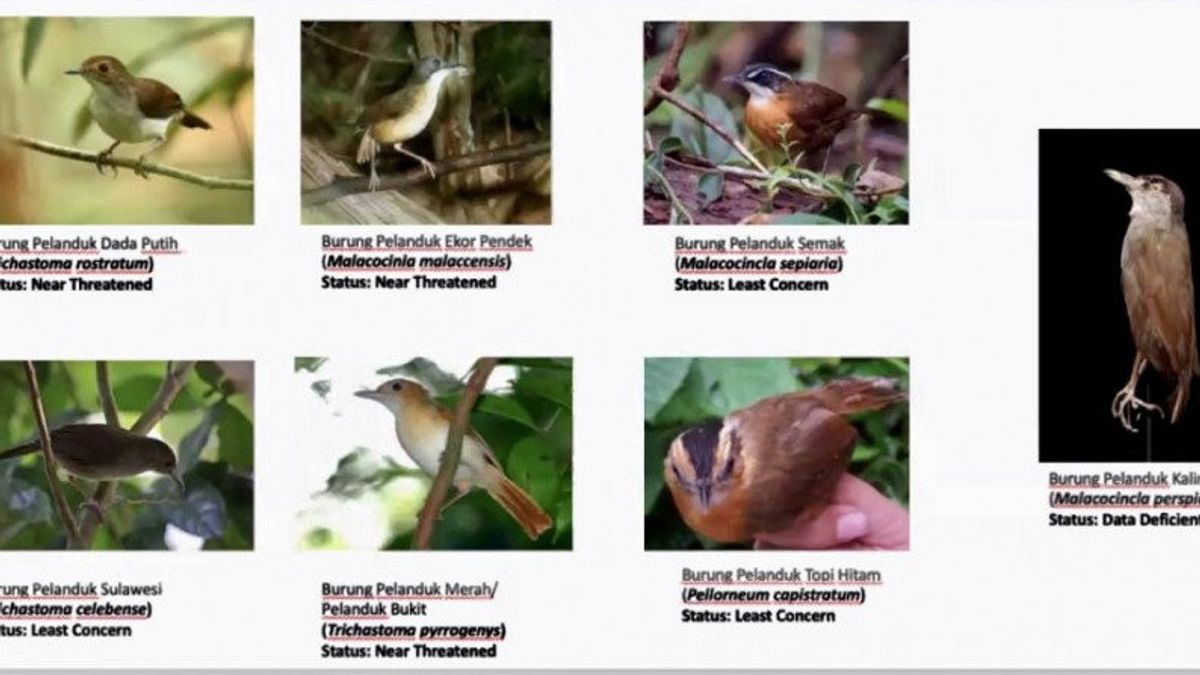
JAKARTA - The endemic animal of the Kalimantan pelanduk, or Malacocincla perspicillata, which is thought to have been extinct since 1848 or 172 years ago, has been re-discovered in South Kalimantan.
The Director General of Natural Resources and Ecosystem Conservation (KSDAE) of the Ministry of Environment and Forestry (KLHK) Wiratno appreciated citizen science, which collects and analyzes scientific data.
Wiratno said that wildlife will be fully prosperous if they live in their natural habitat. This also emphasized that his party is fighting the illegal poaching of protected wildlife.
First Functional Officer for Forest Ecosystem Control (PEH), Sebangau National Park (TN) Teguh Willy Nugroho said the Kalimantan hornbill was found in accordance with the description of the French ornithologist Charles Lucien Bonaparte in 1850. This is based on specimens collected in the 1840s by German geologist and naturalist Carl ALM Schwaner during his expedition to Borneo.
Since then, no other specimens or sightings have been reported. In addition, the origin of the specimens is still a mystery, even the island where the specimens were taken is unclear.
The initial assumption that the specimen was taken on the island of Java in 1895 was explained by the Swiss ornithologist Johann Büttikofer, who indicated that at that time Schwaner was on the island of Borneo.
This specimen later became the only specimen in the world so that all references and descriptions of bird morphology refer to that one specimen.
The songbird belonging to the Pellorneidae family was previously classified as Vulnerable by the IUCN. In 2008, the bird's status changed to "Data Lack of Data" based on recent research showing a lack of reliable information. In the Regulation of the Minister of Environment and Forestry Number P 106 of 2018, the bird has not been included as a protected animal.
The origin of the bird was discovered by accident by two local residents in one area in South Kalimantan. One of them is a member of a social media group called Galeatus which is a community and communication group about birds.
After discussing and being reviewed by the admin team, they then contacted an ornithologist from Birdpacker to find more information related to these findings.
"There are striking differences in the anatomy of birds found with existing literacy, including the color of the iris, beak, and leg color. That is what makes identification difficult when first looking at the morphology of this bird," said Teguh, who is also one of them. author of a paper on the bird.
Teguh emphasized that these findings also prove that Indonesia's biodiversity still exists in the deepest parts of the forest. He argued, in the current conditions of the COVID-19 pandemic, it is important to build networks between local communities, novice researchers, professional researchers, and various parties to can gather information on biodiversity in Indonesia, especially important species for which little data is available.
"This network can have a big impact on the preservation of animals in Indonesia," Teguh said.
The English, Chinese, Japanese, Arabic, and French versions are automatically generated by the AI. So there may still be inaccuracies in translating, please always see Indonesian as our main language. (system supported by DigitalSiber.id)












